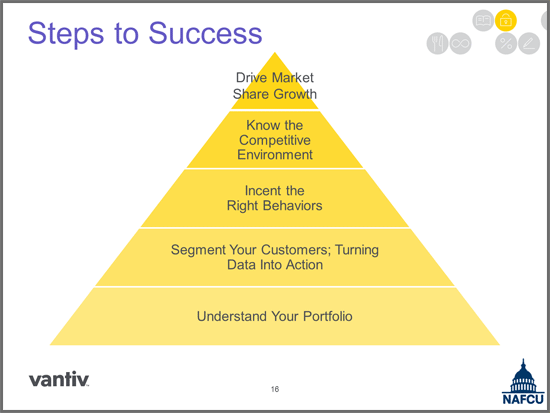Carpe Diem – Living in a Post-Durbin World
The NAFCU CEOs and Senior Executives Conference this week has featured some outstanding presentations, including noted management guru John Spence (author of âAwesomely Simpleâ) and financial services expert Brett King (author of Bank 2.0). But for me one of the more meaningful presentations came from Royal Cole, Vantivâs Financial Institution President.
Last year everyone was uncertain about the impact of the Durbin amendment and the myriad of other new financial services regulations. Flash forward and we now have a sense of what the future landscape is going to look like, which means that credit union executives should be assessing how (or if) their strategic plans need to change to adapt to the new reality.
Royalâs presentation was focused on precisely this point â titled âCarpe Diem â Living in a Post-Durbin World,â it zeroed in on the growth opportunity facing credit unions today, and more importantly what we need to do to take maximum advantage of it.
Iâm not going to walk through every slide â youâll need to wait for the recorded version to be posted online in a week or so and do that yourselves â but one section in particular was spot-on. It provided a road map for growing the credit union in a very uncertain world.
Look at the foundation piece of this pyramid â âunderstand your portfolio.â At the core of this process is analytics â data on your member activities that form the basis for analysis on what happened and are essential to figuring out what your next moves ought to be.
Looking specifically at card program behaviors, Royal suggested segmenting your members into card groups based on their spending behaviors using, among other demographic or performance information:
- Last activity
- High/Low users
- Transaction type
- Account type - Card or Checking
- Branch locations
- VIP
Royal then went on to outline one of the most useful marketing activities that any company can undertake with regard to marketing initiatives â set up target and control groups by segment, devise A and B offers/pitches, send them out and analyze the results. Then repeat â and repeat again. This is truly the most effective way to understand which offers and which themes resonate best with your particular target segments.
We mentioned that segmentation is based on behaviors, and at the end of the day you want to change behavior, whether for more savings, to generate loan volume, or even to expand your card portfolio. This process is both iterative and proven â start by doing a deep dive into your portfolio analytics, then identify your most profitable members (or those who have the potential to become more profitable), then test and learn to incent the right behaviors. And then repeat, again and again.
I agree with Royal â the potential for explosive growth exists when you marry this approach with the opportunities facing credit unions today given all the momentum created by Bank Transfer Day. And be prepared to step out of your comfort zone.
But you have the responsibility of being prepared for this coming change. Tapping into this growth may require new ways of reaching your audience (mobile, text, social media, etc.) and may also require working with new partners, if your existing vendors canât support your growth efforts.
Thatâs the good news. The bad news is that other non-traditional players have also seen this opportunity, so be prepared to see competition from unexpected quarters. Itâs not a question of whether you want to compete with the likes of PayPal and Apple â itâs a question of when and how.
But credit unions have a secret weapon that many others donât, and it is the strong loyalty that we engender with our members. Leverage that asset to the maximum extent with good planning and stellar execution, and those non-traditional competitors might just look for softer targets without the loyalty of their customers.
Post written by Dave Frankil, President, NAFCU Services Corp.


